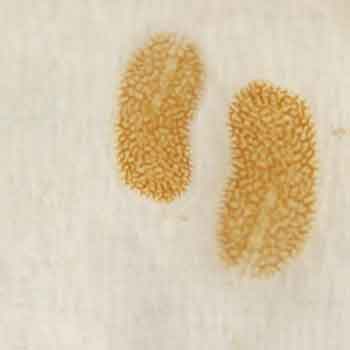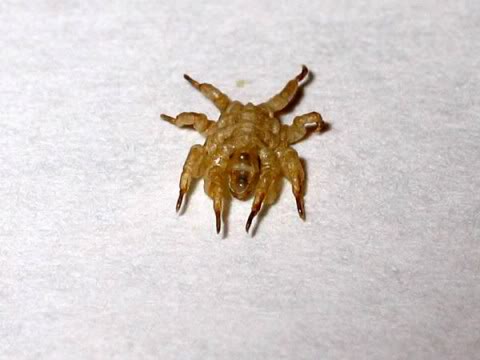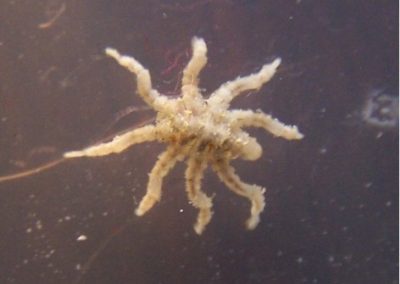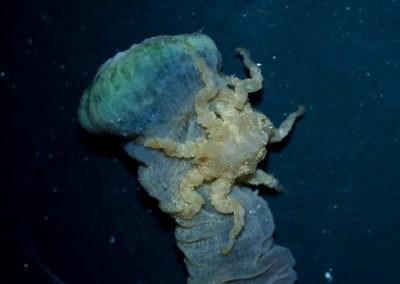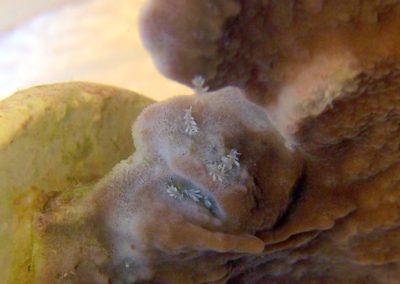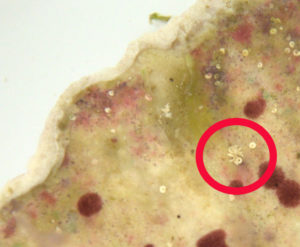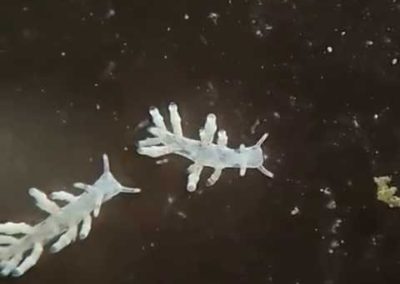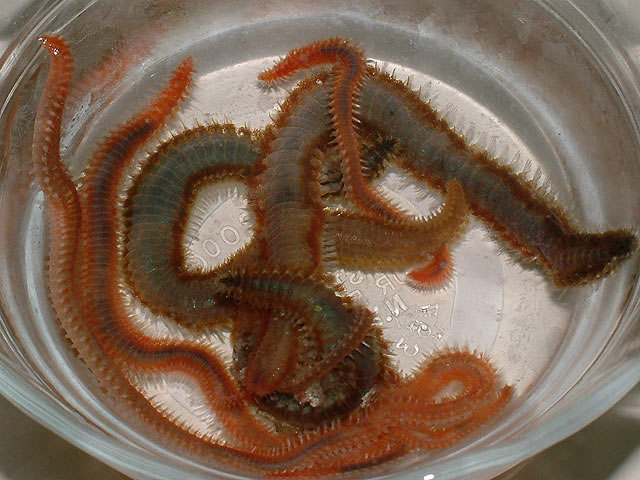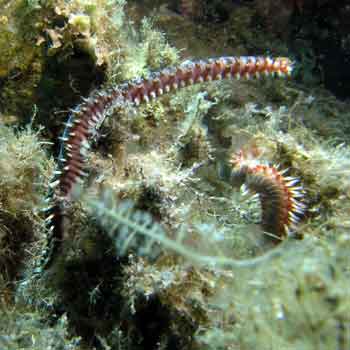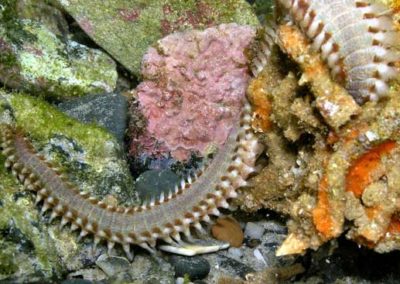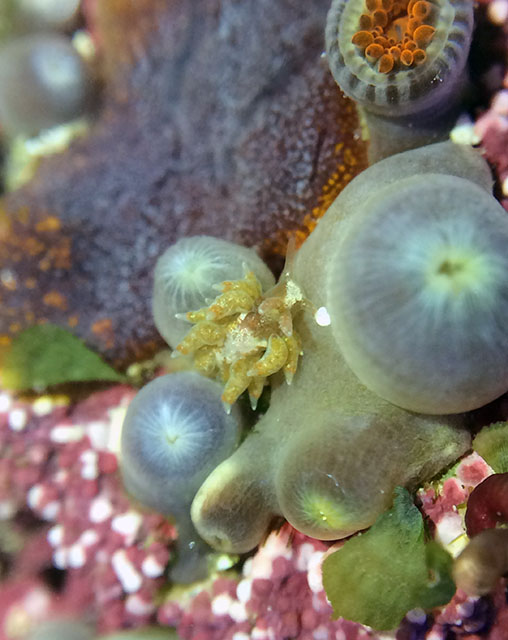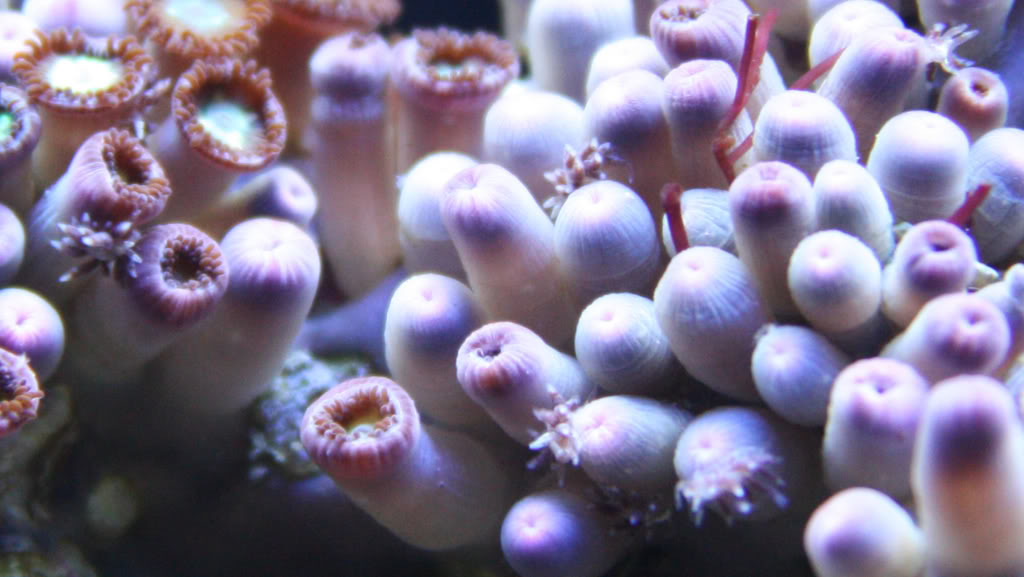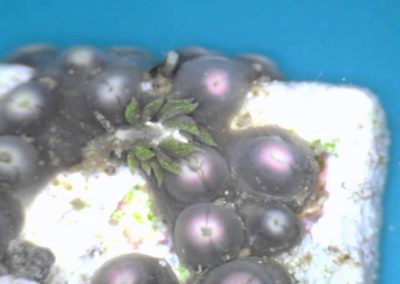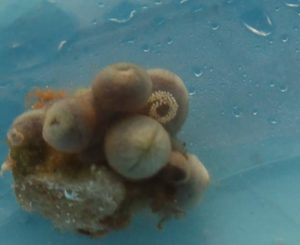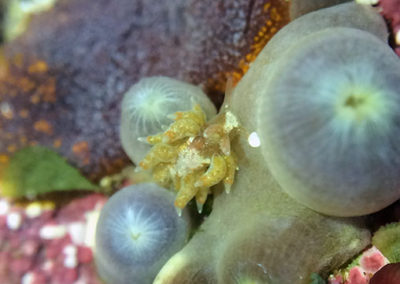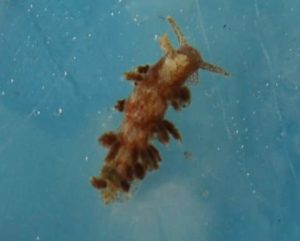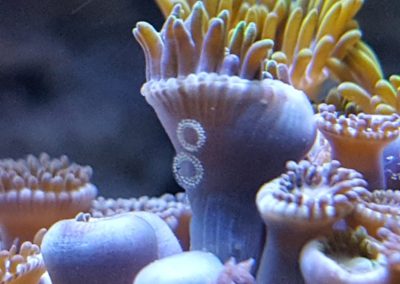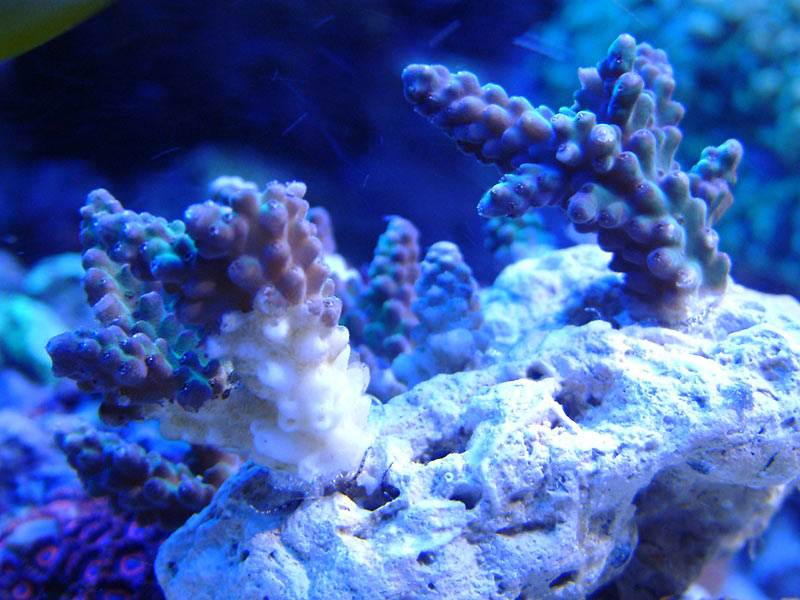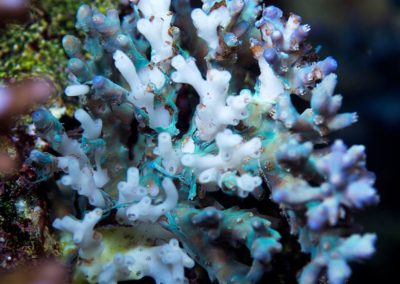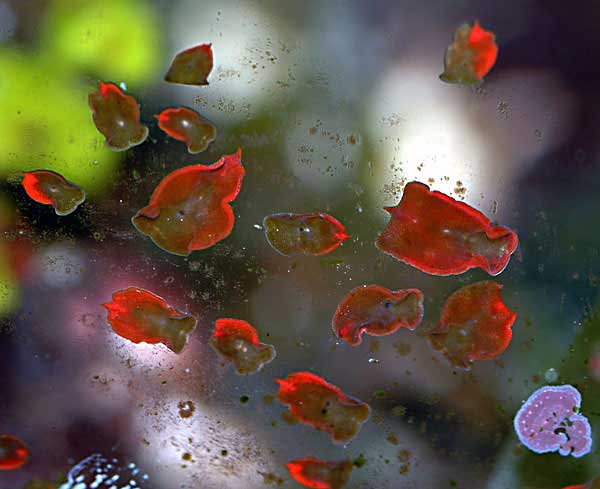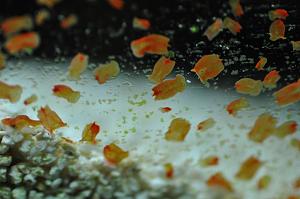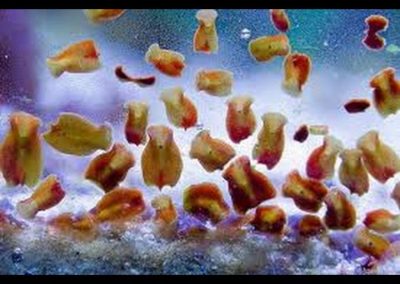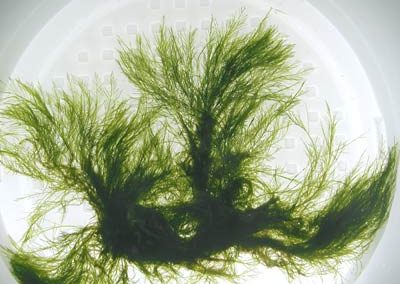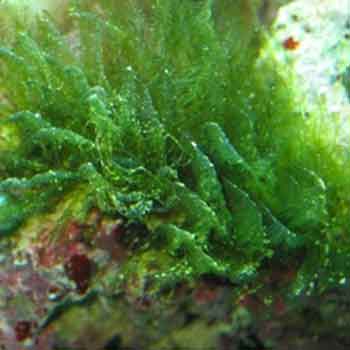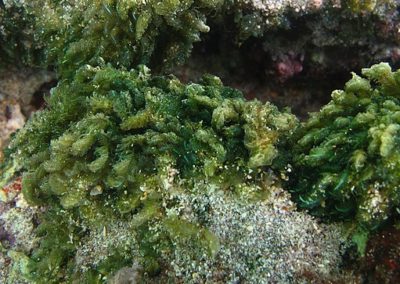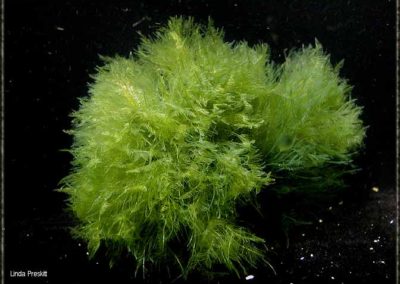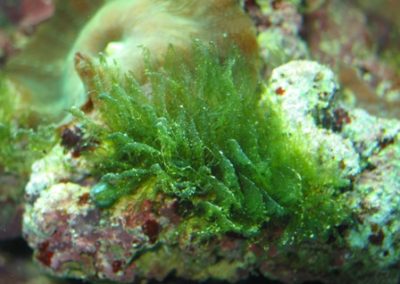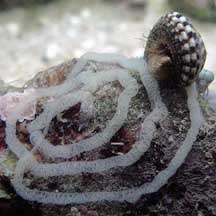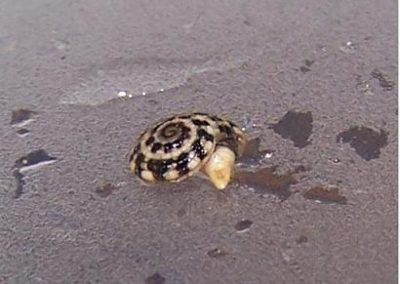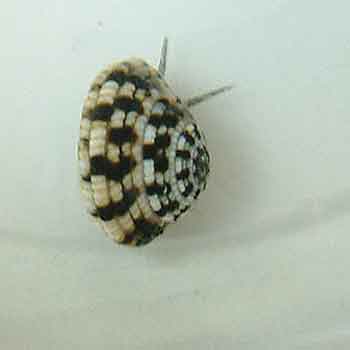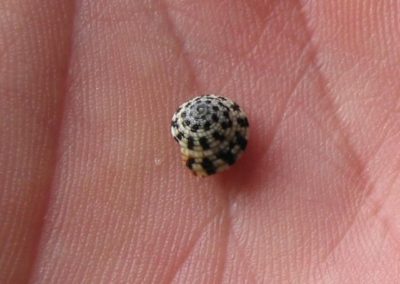Introduction to Acropora Eating Flatworms (AEFW):
An Acropora Eating Flat Worm (AEFW) is a flatworm that only effects Acropora, but does not affect all Acropora species. Some Acropora species are more prone to infection than others. Acropora species that have shorter polyps have a greater chance of having these parasites. Acropora nana is well liked by the AEFW.
This parasite is almost invisible; it may consume the Zooxanthellae making it the same color as the infected Acropora. It is similar in shape to the common red flatworm but is about twice the size. The photos below show how hard it is to tell an Acropora is infected.
Signs of infection:
The easiest way to recognize whether or not you have AEFW is to look for “bite marks” and eggs around the base. The “bite marks” maybe missing Zooxanthellae. Bite marks are shown in the photos below.
Scroll through images of aefw damage below. Identification is a key to prevention, and dipping in CoralRx is the ounce of prevention everyone should take.
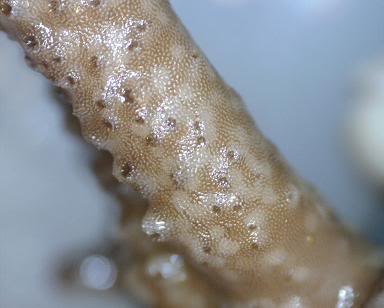



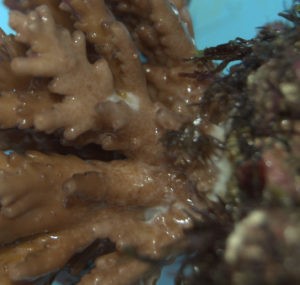

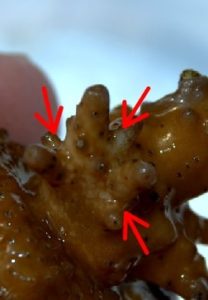
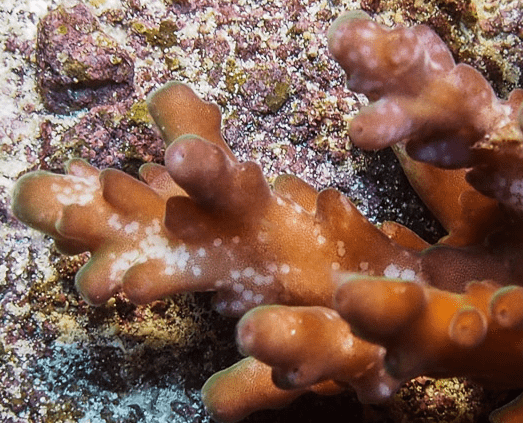
AEFW Life Cycle:
Toxins in the eggs of the Acropora Eating Flatworm destroy the tissue near the eggs. The tissue is not eaten but chemically burned. In the pictures below eggs are shown between the polyps of an Acropora and the chemical burn. There is not a lot known about the life cycle of these flatworms. Eggs are the reddish brown dots with the white dead tissue around them.
Prevention:
A quarantine tank is the easiest way to prevent these flatworms from destroying your Acropora based reef tank. Ideally, Acropora corals should be left in quarantine for 3 months. During the quarantine time, you should view the coral on a daily basis and watch for any bite marks or eggs on the coral. Flatworms like to hide on the underside of Acropora. Eggs are normally found on the base of the coral. Whether or not quarantine is an option, a dip in CoralRx is highly suggested.
Treatment:
Treatment should be done in a quarantine tank. The first step is to move the affected corals to a quarantine tank; the quarantine tank should have good light and water flow. Setup your quarantine tank, then take your coral out of the main tank and dip it in Coral Rx. While the coral is in CoralRx take a turkey baster, and blast the coral with the dip. Making sure it is getting in between the branches and in all the cracks of the coral. Do this for approximately 5 – 10 minutes. After 5 – 10 minutes, remove coral and discard the coral dip. Do not reuse the coral dip as parasites may release toxins. Rinse coral with clean saltwater and return to a quarantine tank. Repeat every 4-7 days until no more flatworms are found. Leave the coral in your quarantine system for an additional 3 months before moving back to your aquarium. Additionally, adding wrasses to your quarantine tank will also aid in the treatment of Acropora Eating Flatworms.

